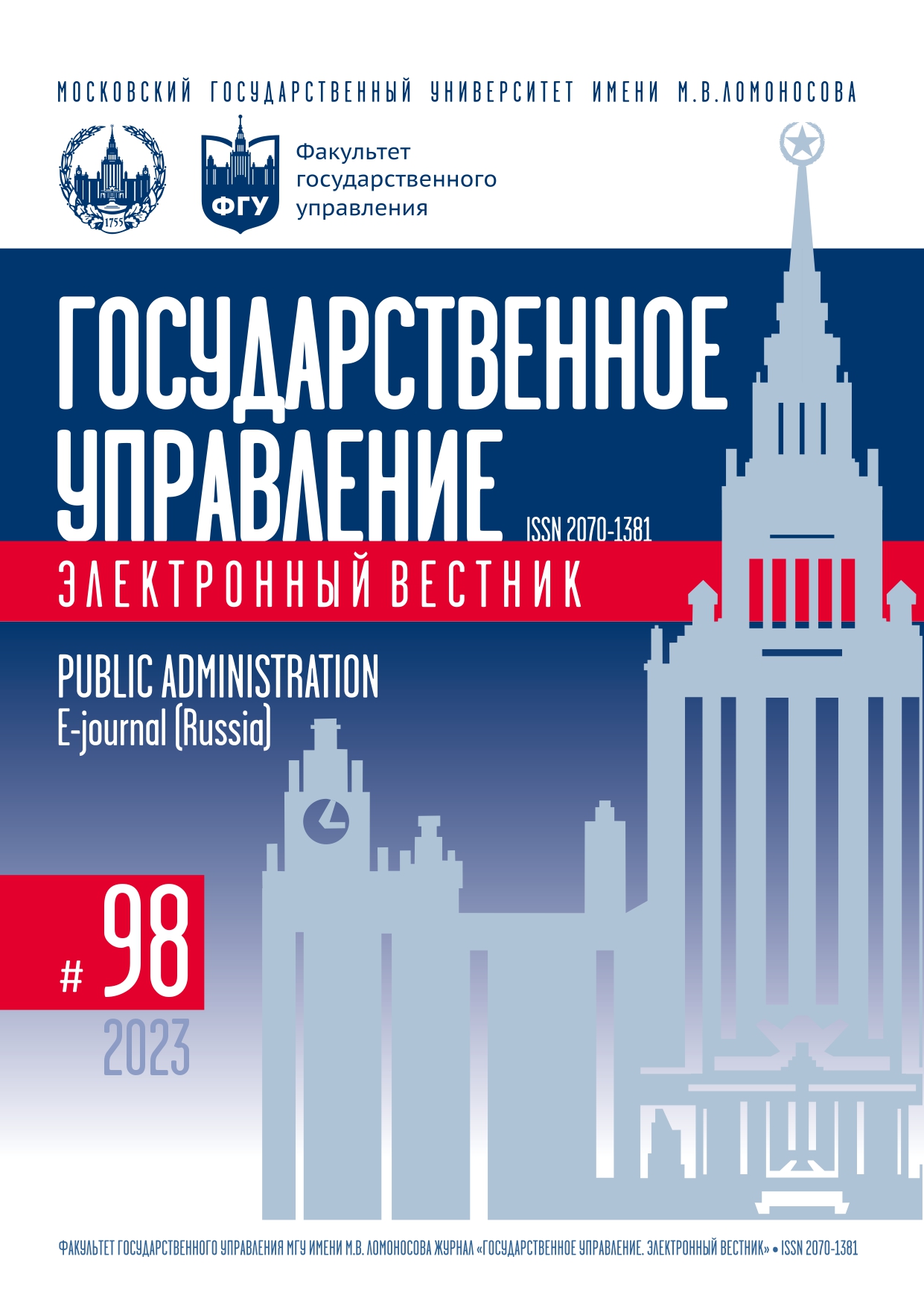How to Measure the Cultural Code? Quantitative Analysis of Semantics in A.S. Pushkin’s Fairy Tales and Values of Russian Youth
Keywords:
Cultural code, A.S. Pushkin’s fairy tales, youth values, vector semantic analysis, automated algorithm, Roget’s ThesaurusAbstract
To formalize the concept of cultural code means to isolate quantitative parameters available for precise measurement, comparison
in different cultures and long-term observation. This task has not yet been fully solved. In particular, there are no tools to quantify
the possible influence of mass culture works on the cultural code, although the fact of such influence is not questioned. This paper
studies the texts of Pushkin’s fairy tales as examples of mass and well-known works for representatives of the cultural community
of Russian language native speakers$; compares the meanings contained in fairy tales with the meanings of values of Russian
schoolchildren and students, verbalized in the form of free associations with “something most important in life”. For quantitative
analysis, an automated algorithm to covert the text into a vector with the frequencies of the semantic groups of the Roget’s
Thesaurus was used. The overall semantic proximity of fairy tales to the values of young people was less than the proximity of fairy
tales to each other. The five most significant meanings in common between fairy tales and values can be conventionally designated
with the words Love, Pleasure, Mankind, Existence, and Consanguinity. Overall, the methodology presented in the paper allows for
automatic quantitative comparison of meanings in given literary works and in given target groups, and can be applied for further
research on the cultural code.
References
Андреюк Д.С., Очковская М.С. Соответствие контекста упоминания бренда в литературе современным ценностям бренда и целевой аудитории (на примере Nestlé в воспоминаниях К. Чуковского об А. Ахматовой) // Вестник Санкт-Петербургского университета. Менеджмент. 2022. № 4. С. 527–547. DOI: 10.21638/11701/spbu08.2022.402
Андреюк Д.С., Петрунин Ю.Ю., Храбровская В.Д. Метод кластеризации групп молодежи на основании ценностных смыслов в отношении профессионального развития и жизни в целом // Государственное управление. Электронный вестник. 2020. № 83. С. 221–242. DOI: 10.24411/2070-1381-2020-10117
Андреюк Д.С., Ливитина А.С., Сушко Н.С. Семантический анализ структуры ценностей группы с помощью Тезауруса Роже: автоматизированный алгоритм // Государственное управление. Электронный вестник. 2022. № 91. С. 148–161. DOI: 10.24412/2070-1381-2022-91-148-161
Бернштейн Н.А. О построении движений. М.: Медгиз, 1947.
Велилаева Л.Р., Абдулжемилева Ф.И. Культурный код в художественной литературе // Мир науки, культуры, образования. 2021. № 6(91). С. 527–529.
Выготский Л.С. Педагогическая психология. М.: Педагогика-Пресс, 1996.
Зубок Ю.А., Чупров В.И., Любутов А.С., Сорокин О.В. Саморегуляция жизнедеятельности молодежи: структурно-таксономическое моделирование // Социологические исследования. 2021. № 10. С. 23–36. DOI: 10.31857/S013216250014766-5
Конькина Е.В., Николаева Н.А., Савинова И.А. Отражение традиций народной педагогики в сказках А.С. Пушкина // Обучение и воспитание: методики и практика. 2013. № 7. С. 284–288.
Леонтьев А.Н. Деятельность. Сознание. Личность. 2-е изд. М.: Политиздат, 1977.
Леонтьев Д.А. Психология смысла. М.: Смысл, 1999.
Непомнящий В.С. Поэзия и судьба. Над страницами духовной биографии Пушкина. М.: Сов. писатель, 1987.
Оконешникова А.В. Сказки А.С. Пушкина // Austrian Journal of Humanities and Social Sciences. 2015. № 1–2. С. 164–168.
Сорокин О.В. Смысловые девиации российской молодежи в сфере труда // Научный результат. Социология и управление. 2022. Т. 8. № 3. С. 79–90. DOI: 10.18413/2408-9338-2022-8-3-0-6
Gerasimenko V., Andreyuk D., Kurkova D. Approach for Management of Brand Positioning: Quantification of Value Matching between Brand and Target Audience // Polish Journal of Management Studies. 2021. Vol. 24. Is. 1. P. 96–111. DOI: 10.17512/pjms.2021.24.1.06
Hofstede G. Cultures Consequences. Comparing Values, Behaviors, Institutions, and Organizations across Nations. Thousand Oaks, London, New Dehli: Sage Publications, 2001.
Klingenstein S., Hitchcock T., DeDeo S. The Civilizing Process in London’s Old Bailey // Proceedings of the National Academy of Sciences. 2014. Vol. 111. Is. 26. P. 9419–9424. DOI: 10.1073/pnas.140598411
Ochiai A. Zoogeographical Studies on the Soleoid Fishes Found Japan and Its Neighboring Regions // Bulletin of the Japanese Society of Scientific Fischeries. 1957 Vol. 22. Is. 9. P. 526–530.
Roget P.M. Roget’s Thesaurus of English Words and Phrases. Austin: MICRA, Inc., 1991.
Rokeach M. The Nature of Human Values. New York: The Free Press, 1973.
Schwartz S.H., Bilsky W. Toward a Universal Psychological Structure of Human Values // Journal of Personality and Social Psychology. 1987. Vol. 53. Is. 3. P. 550–562. DOI: 10.1037/0022-3514.53.3.550
TenHouten W.D. Social Dominance Hierarchy and the Pride-Shame System // Journal of Political Power. 2017. Vol. 10. Is. 1. P. 94–114.
DOI: 10.1080/2158379X.2017.1285154

